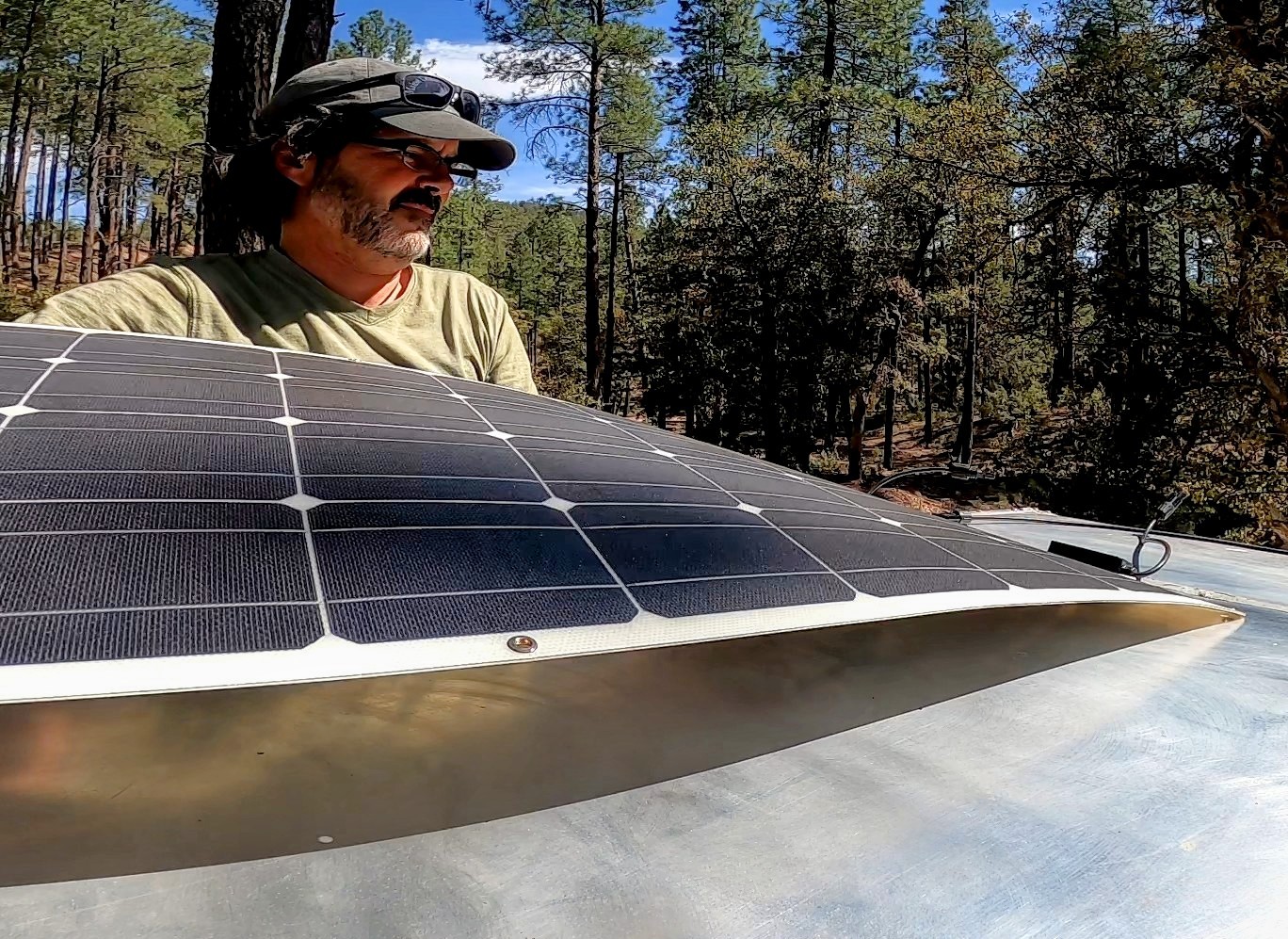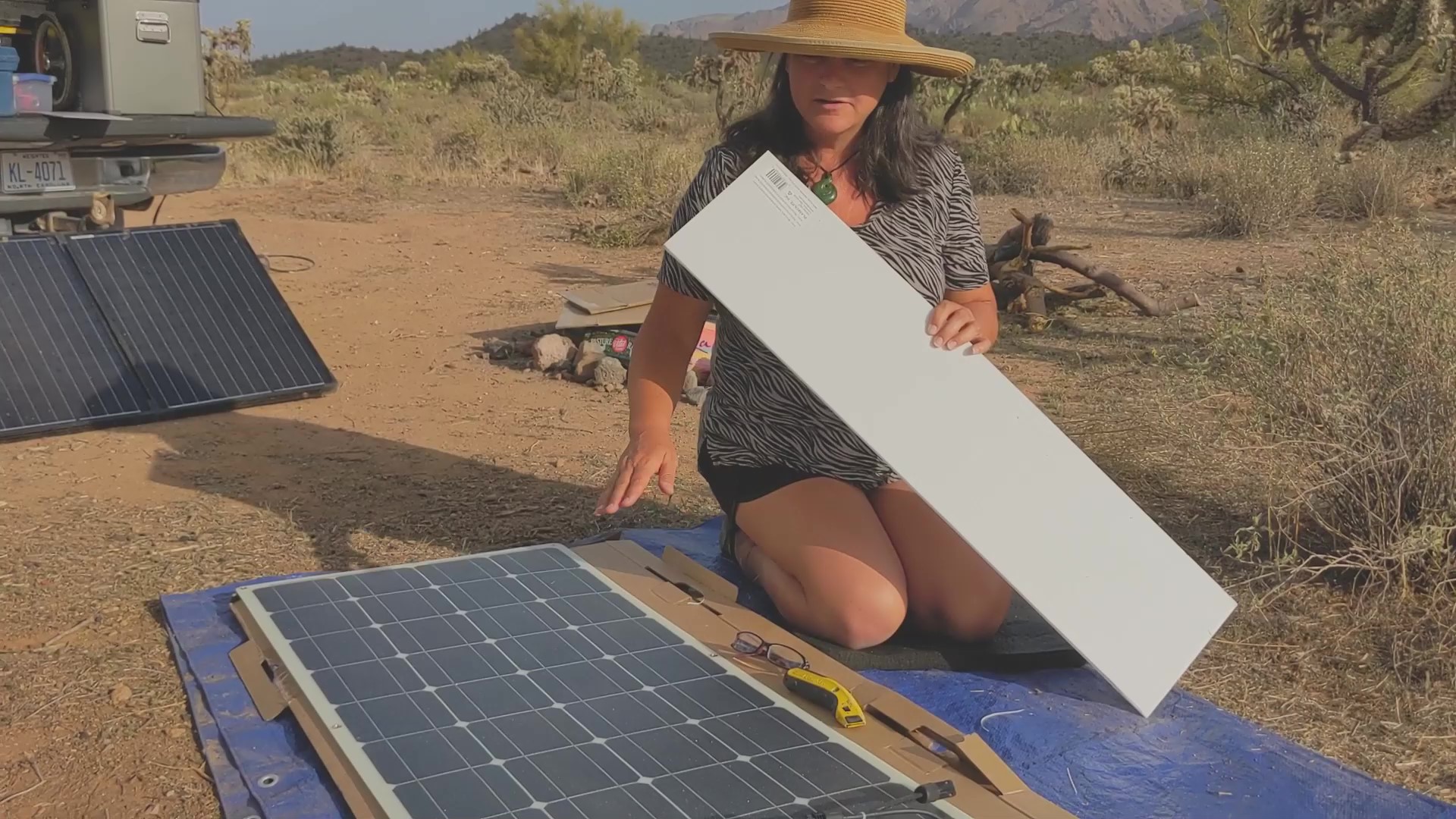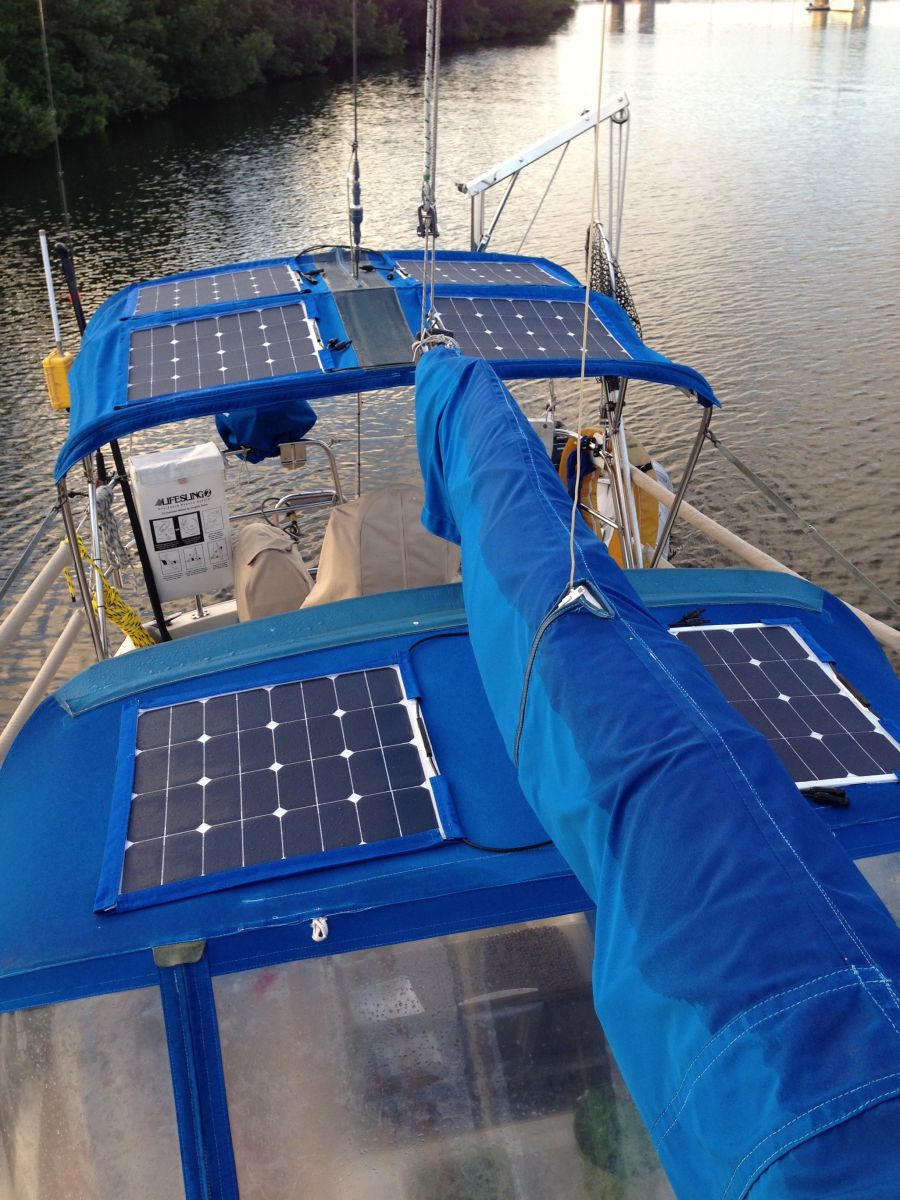Busting Myths about Flexible Panels
Simply put...flexible panels have gotten a bad rap over the years. Early models were made with less durable materials and caused many people to shy away from trying them out, even now. When you mention flexible panels in any solar-related forum, many critics will chime in saying they have “heard they don’t hold up like rigid panels.” Without having any personal experience with flexible panels, people just pass along what they’ve heard from the grapevine.
We’ve been living on the road with solar power for nearly 9.5 years. Last spring, it was time for a solar upgrade -- we needed to be completely self-sufficient and produce enough energy to meet the demands of our life AND our small, growing, mobile business. Since our home is a vintage camper built during the Eisenhower administration, we didn’t want to add unnecessary weight to the roof. It was time to give flexible panels the full-timers test, so we installed two 100W flexible panels on the roof of Hamlet in April 2021. We installed the panels while boondocking in Arizona, traveled to the coast of Maine where we spent the summer, and are now in northern Michigan visiting family. After a recent inspection, they both look and perform like they were installed yesterday...even after 9 months of full-time use, extreme weather conditions, and over 9000 miles.

1. Not as efficient as rigid panels.
When installed flat on a roof they will produce less energy than if they were optimally angled to the sun (rigid panels have the same problem in this configuration). To compensate, Renogy flexible panels are designed with raised bumps on the surface to capture more sunlight, especially in the early morning and late afternoon when the sun is at a low angle. This is also quite helpful from October to March.
2. They will fly or tear off in the mobile applications.
If installed properly, they stay put. They are rated to withstand wind up to 2400 Pa (Pascal) and snow loads of up to 5400 Pa. Before installation, thoroughly clean the roof surface using a soft scrub brush with soap and water, then use rubbing alcohol to remove any sap, oils, etc. We attached the insulation layer to the panels with zip ties through each grommet on the panel, then attached the panel to the roof with Eternabond tape. See our installation video for details of how we did this.
3. Panels will delaminate in the heat and aren’t as durable.
We haven’t seen any signs of delamination and despite the miles we’ve put on them, nor any signs of wear and tear. They look like they were installed yesterday, despite the harsh weather conditions from desert heat to torrential summer rain to snow and ice. Renogy flexible panels carry the same 5 year material and workmanship warranty and 25 year power generation warranty, which is the same as their warranty on their rigid panels.

4. You cannot install the panels directly on the roof.
While you can install them directly on a roof surface, we advise that you add a small insulating layer underneath such as ¼ inch corrugated plastic. This will allow air flow underneath the panels to avoid any overheating issues, and extend the life of the panels.
5. Bending them will crack the solar cells and damage the panels.The panels are designed to flex up to 248 degrees, which makes them perfect for curved rooflines on RV’s, boat biminis, and other non-flat surfaces.

So, time will tell if we’ll still see the same performance and durability of our installation over the years; but, we think that the benefits of flexible panels far outweigh any compromise.
1. Weight:
We have a 65 year old trailer, and we really didn’t want to have to install a heavier pair of panels, or some complicated bracket. At 4.2 lbs, each compared to 14.5 lbs of a rigid panel, the weight reduction is a no-brainer
2. Roof Line:
While we’re certainly not vintage camper purists, we still like the low-profile roofline that we’ve been able to maintain. This probably contributes to lower wind-resistance when compared to a rigid installation, but this might just be as much an esthetic decision rather than scientific.
3. Curved Surface Options:
While we haven’t needed to take advantage of a curved surface installation, these certainly do increase the options for anyone adding panels to a curve of up to 248 degrees.

We are very pleased with the overall performance of our upgraded system as it has allowed us to be completely free of campgrounds with hookups or public services like libraries and coffee houses to charge up our laptops. These digital nomads can now work from anywhere we can set up our Hamlet! Want to learn how to size a system and choose components which will meet your needs? Check out our Solar 101 video!

In 2012, Shari Galiardi & David Hutchison left behind careers and a comfortable home in North Carolina to travel with the vintage camper trailer they lovingly restored, outfitted with solar, and named "Hamlet." What began as a short break from careers and responsibility quickly turned into a love affair with roadlife. They have parlayed their higher education backgrounds, desire for life-long learning, and thirst for adventure travel into writing, photography, video production, and public speaking gigs from coast to coast. Known to their friends as simply Shari & Hutch, you can learn more about their full-time, solar-powered adventures on their website at freedominacan.com. Or, follow them on Facebook, Instagram, and YouTube as “Freedom in a Can, LLC.”











